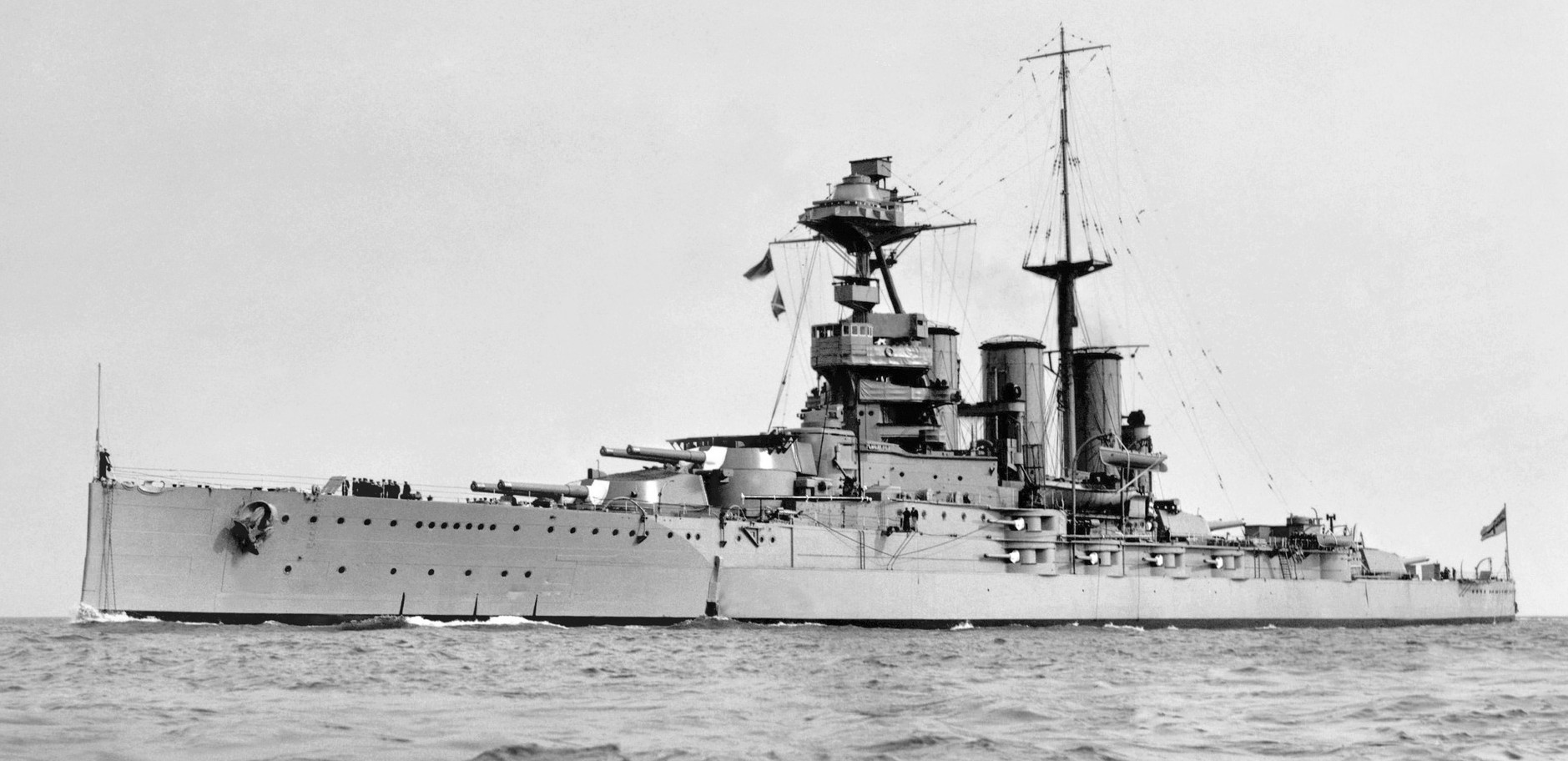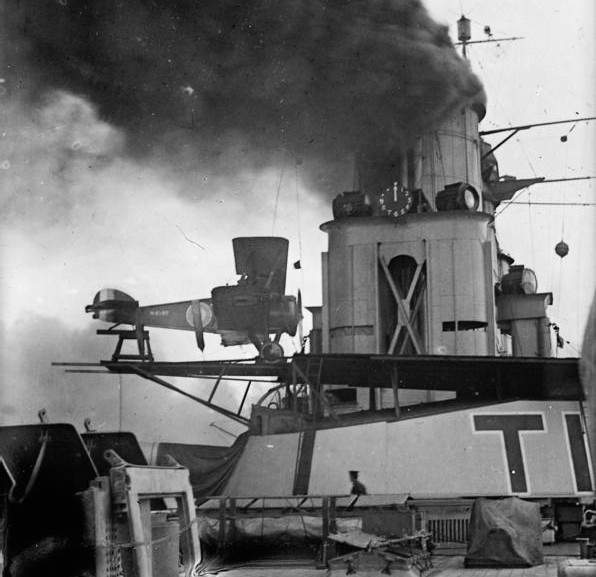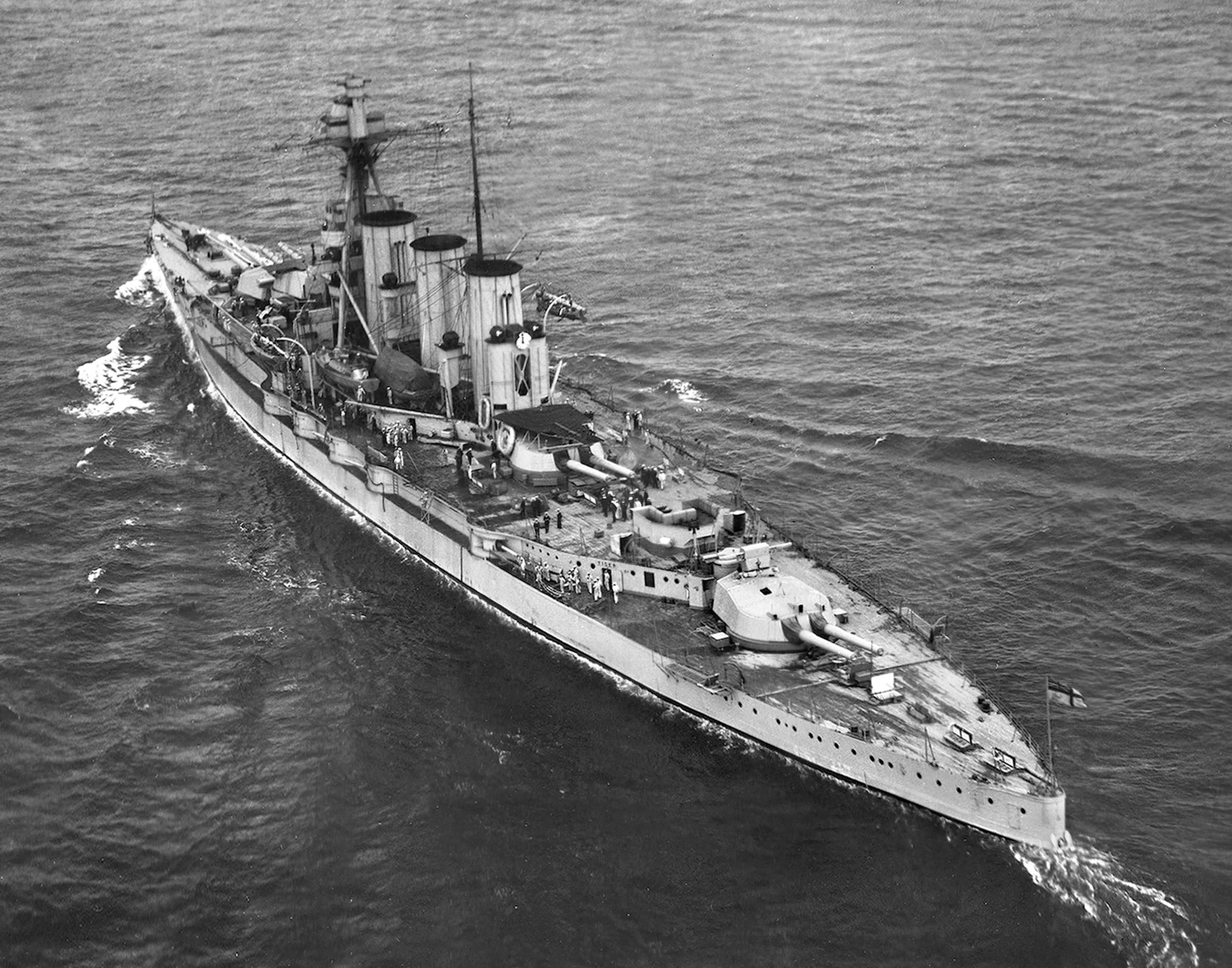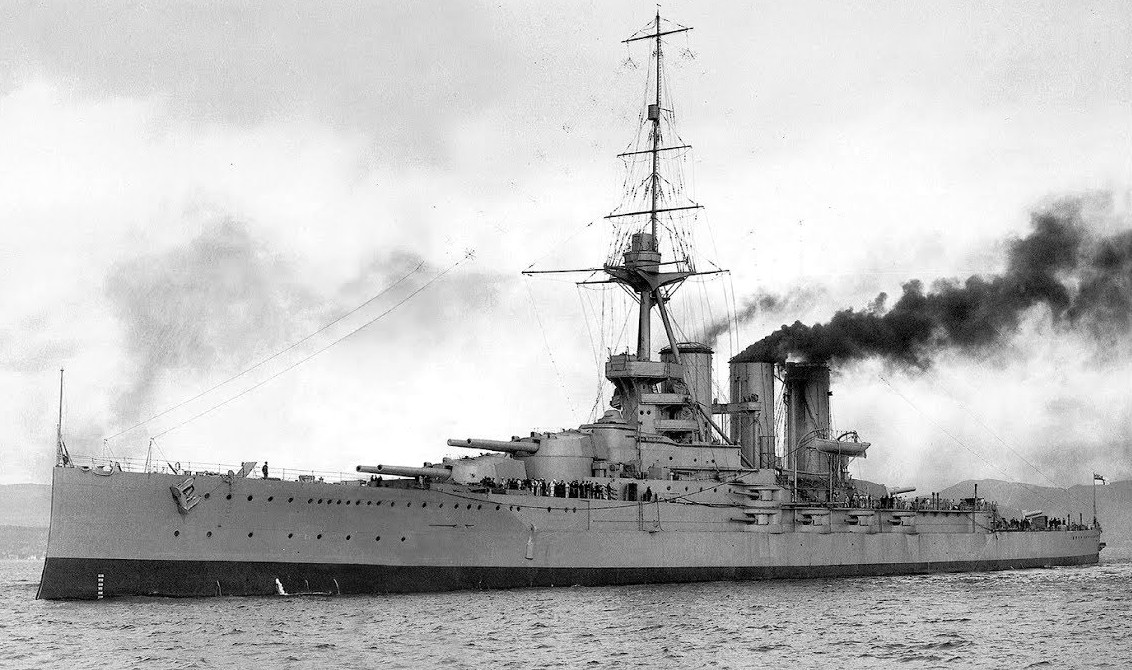Royal Navy battleship: HMS Tiger
Royal Navy battleship HMS Tiger

(RN Photo)
HMS Tiger was a battlecruiser built for the Royal Navy during the 1910s. The ship was the most heavily armoured British battlecruiser at the start of the First World War in 1914, but was not yet ready for service. The ship was assigned to the 1st Battlecruiser Squadron (1st BCS) for the duration of the war and participated in the Battle of Dogger Bank in early 1915, though she was still shaking down and did not perform well. Tiger next participated in the Battle of Jutland in 1916, where she was only lightly damaged despite suffering many hits by German shells. Apart from providing distant cover during the Second Battle of Heligoland Bight in 1917, she spent the rest of the war on uneventful patrols in the North Sea.
The ship was the oldest battlecruiser retained by the Royal Navy after the tonnage limits of the Washington Naval Treaty came into effect in 1922. She became a gunnery training ship in 1924 and then joined the Battlecruiser Squadron in 1929 when its flagship, HMS Hood, underwent a lengthy refit. Upon Hood's return to service in 1931, Tiger was decommissioned and sold for scrap in 1932 in accordance with the terms of the London Naval Treaty of 1930.In his book, The Price of Admiralty, British military historian John Keegan described her as "certainly the most beautiful warship in the world then, and perhaps ever." (Wikipedia)

(IWM Photo, SP 1674)
HMS Tiger at anchor, 1916–17.

(IWM Photo, SP 374)
Sopwith 2F1 Camel ready for launch from the midship 'Q' turret of HMS Tiger.
.jpg)
(Fotoafdrukken Koninklijke Marine Photo)
HMS Tiger after her 1918 refit.

(Royal Navy Photo)
HMS Tiger.

(Royal Navy Photo)
HMS Tiger.

(Royal Navy Photo)
HMS Tiger.

(Royal Navy Photo)
HMS Tiger.

(Royal Navy Photo)
HMS Tiger.

